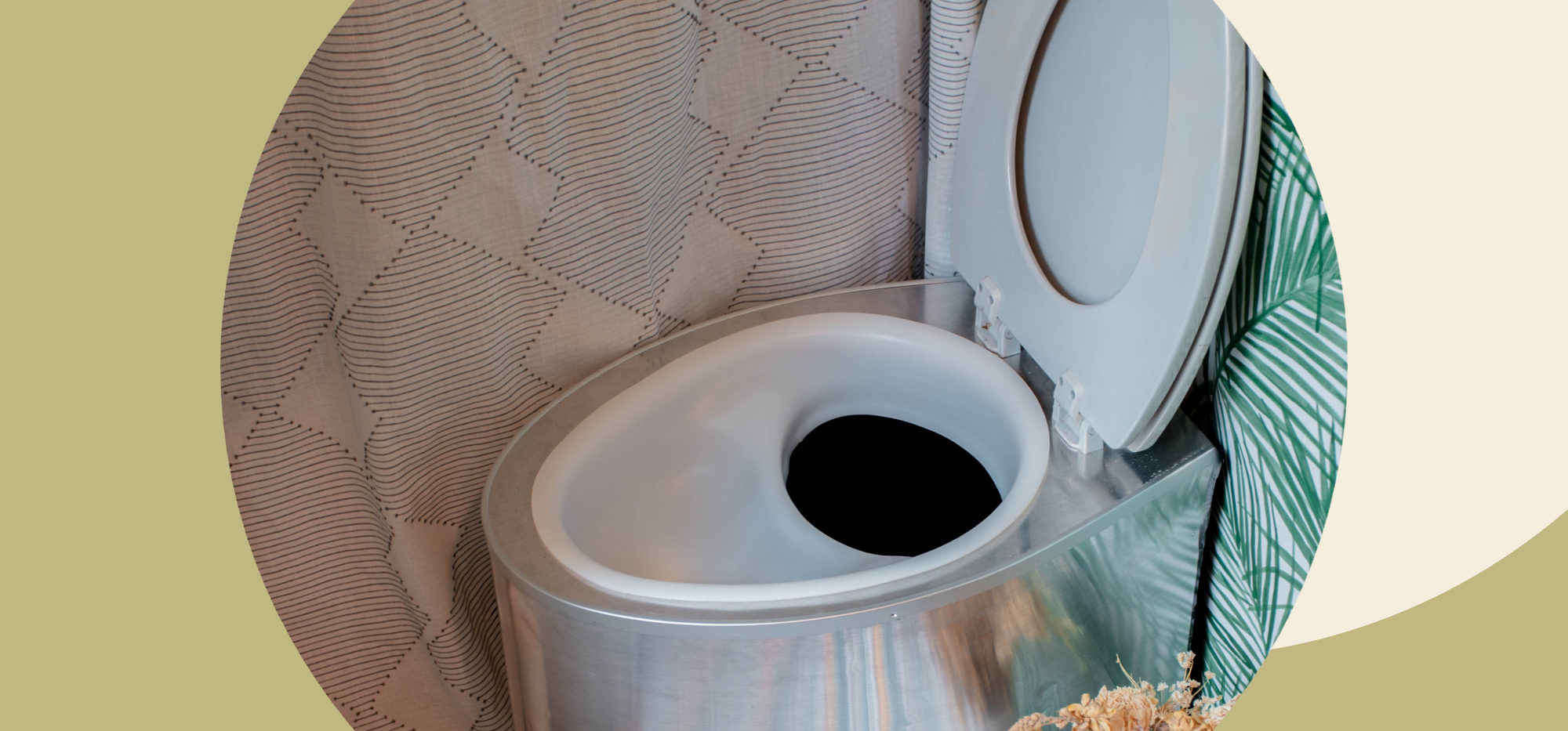Your cart is currently empty!

The ultimate Guide to Troubleshooting a Smelly Composting Toilet
It has come to this: you’re the proud owner of a brand new fancy composting toilet. You’ve even used it a couple times. But now… it smells.
Now what? It’s not something one talks about, especially online, because things you say online live forever and you don’t want your kids finding your reddit thread about your stinky toilet in 10+ years.
But don’t worry, you’ve activated incognito search mode, logged out of all your accounts, burned your paper trail, and found this article on troubleshooting a smelly composting toilet.
Lucky for you, this is the only resource you’ll really need to proudly announce whenever someone asks: Don’t composting toilets stink? Nah! You don’t smell anything. In fact, it smells more like a moist forest covered in moss.
Let’s get to the troubleshooting
Where does the smell come from, liquids or solids?
If you suspect the solids are the source of the stink, the first and easiest solution is to add more dry composting material to the solids. If it’s an issue of liquids, adding a bit of vinegar to the liquids container (or with a spray bottle onto the diverter) will help reduce the smell of urine. Urine can change its smell depending on hydration status, medication, or other factors.
Are you using covering material?
What kind of covering material do you use? Is is clean, fresh, and damp, but not too wet? Have you tried a different covering material? We recommend using Coco Coir or Peat Moss. Wood shavings work, but not as well because they won’t absorb as much moisture. If your covering material is too damp, make sure it dries out a bit before using it. Also, make sure no pests are moving in with your covering material. If you do have issues with flies or larva, prepare the material with boiling water (for example Coco Coir), and then let it dry before using it.
Are you venting your toilet?
While venting isn’t necessary for a composting toilet, it does help with residual smells and to transport moisture out of the toilet (this is especially important in hot and humid climates). Try the THRONE ventilation kit, which runs on both AC and DC, is quiet, energy conscious, and is easy to install!
Is your diverter actually separating your liquids?
Does it require a lot of aim to do so? The most common reason for a smelly composting toilet is the diverter doesn’t adequately separate the liquids from the solids. Not all diverters are made equally, and some require more…aim than others. Even if your diverter is working great for you, it might not be for the other members of the household. Most diverters don’t take anatomic differences into account, and even fewer diverters are build for grown-ups and kids alike. Even if you don’t have issues separating your composting toilet fillings, other members of your family might.
Where does your toilet paper go?
While compostable toilet paper might be added to your solids container (the thinner the better, and no “disposable” wet wipes!), it can mess with the composting procedure and dry out the solids. If you feel like your covering material doesn’t really reach your solids, try a separate trash can for all or most of the toilet paper.
What’s your climate like? Warm and humid?
The more humid your climate is, the more covering material you’ll need to dry out your solids. Warm weather will also speed up the composting process or cause smells if not enough covering material is used.
Does it happen all the time or just occasionally?
Is this a one-time-thing or do nasty smells keep happening? If bad smells only happen every once in a while, try using more covering material. If it’s a common occurrence, try adding something more systemic, like adding ventilation or switching over to a more intuitively usable diverter.
Are you adding any other composting goods to your toilet?
The term “composting” can be a bit deceptive. While it is called a composting toilet, the break-down of materials takes much longer than the solids will actually be in the toilet. Adding food scraps or plant material only furthers the composting process and can increase the moisture content, causing nasty smells. A composting toilet is not meant for food, with the exception of coffee grounds as a supplemental covering material (they act like an air refresher).




It’s normal to have to troubleshoot your composting toilet, but with these tips, you’ll get the hang of this composting toilet thing in no time.
Tags:
Comments
2 responses to “The ultimate Guide to Troubleshooting a Smelly Composting Toilet”
-
I have an airhead now. I’ve been thinking about upgrading. Do you have any full videos on the full process? I watched your IG too. I’d like to see how you remove the pee jug, how the solids is removed and it feels like you’re having to keep a separate bucket with your dry matter to put in after #2? Thanks!!
-
You can see Nick build the full toilet HERE
We don’t have a video removing the buckets yet but we’re working to film more content and hope to have it available soon. The toilet does not store your cover material so you would need a separate bin for that.
-

Leave a Reply